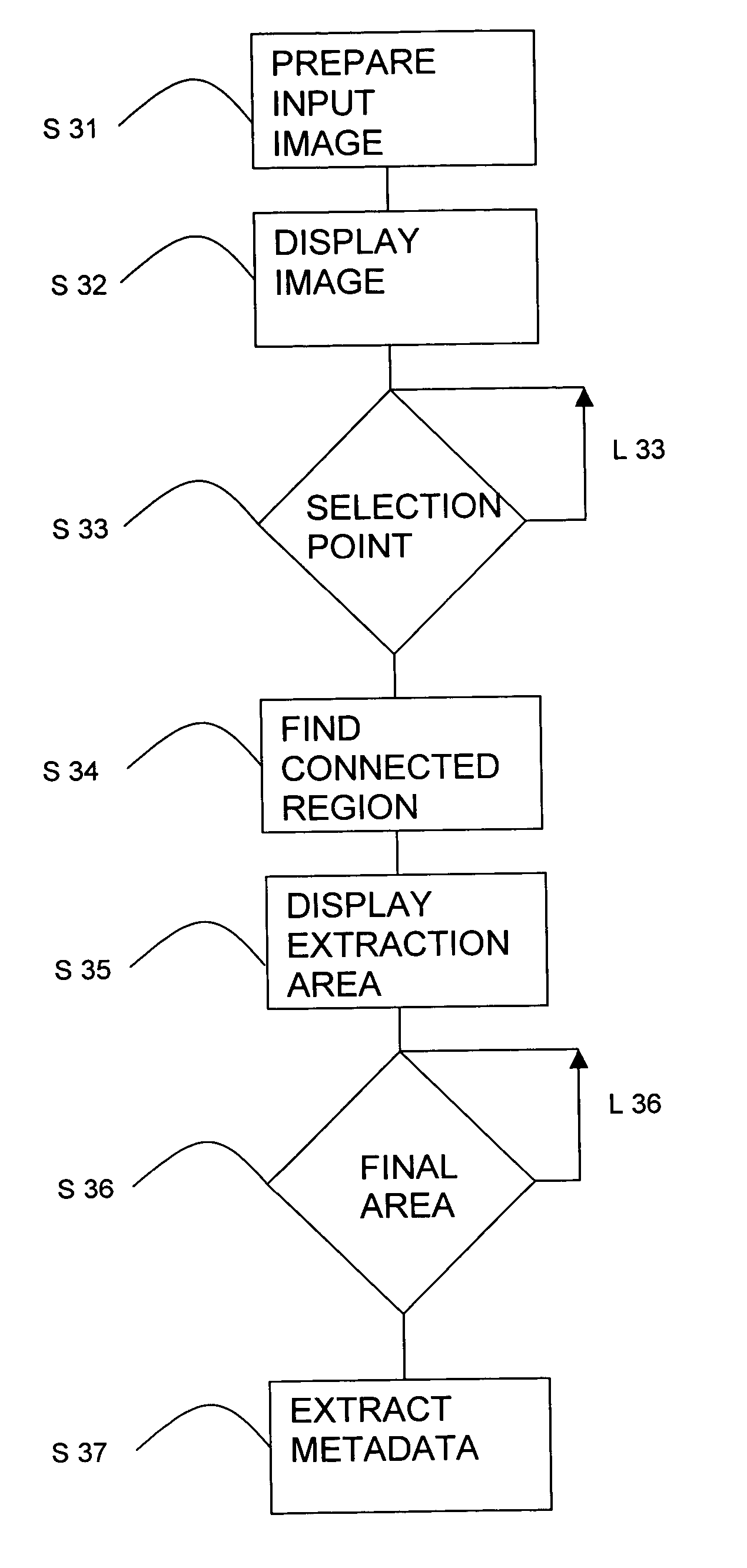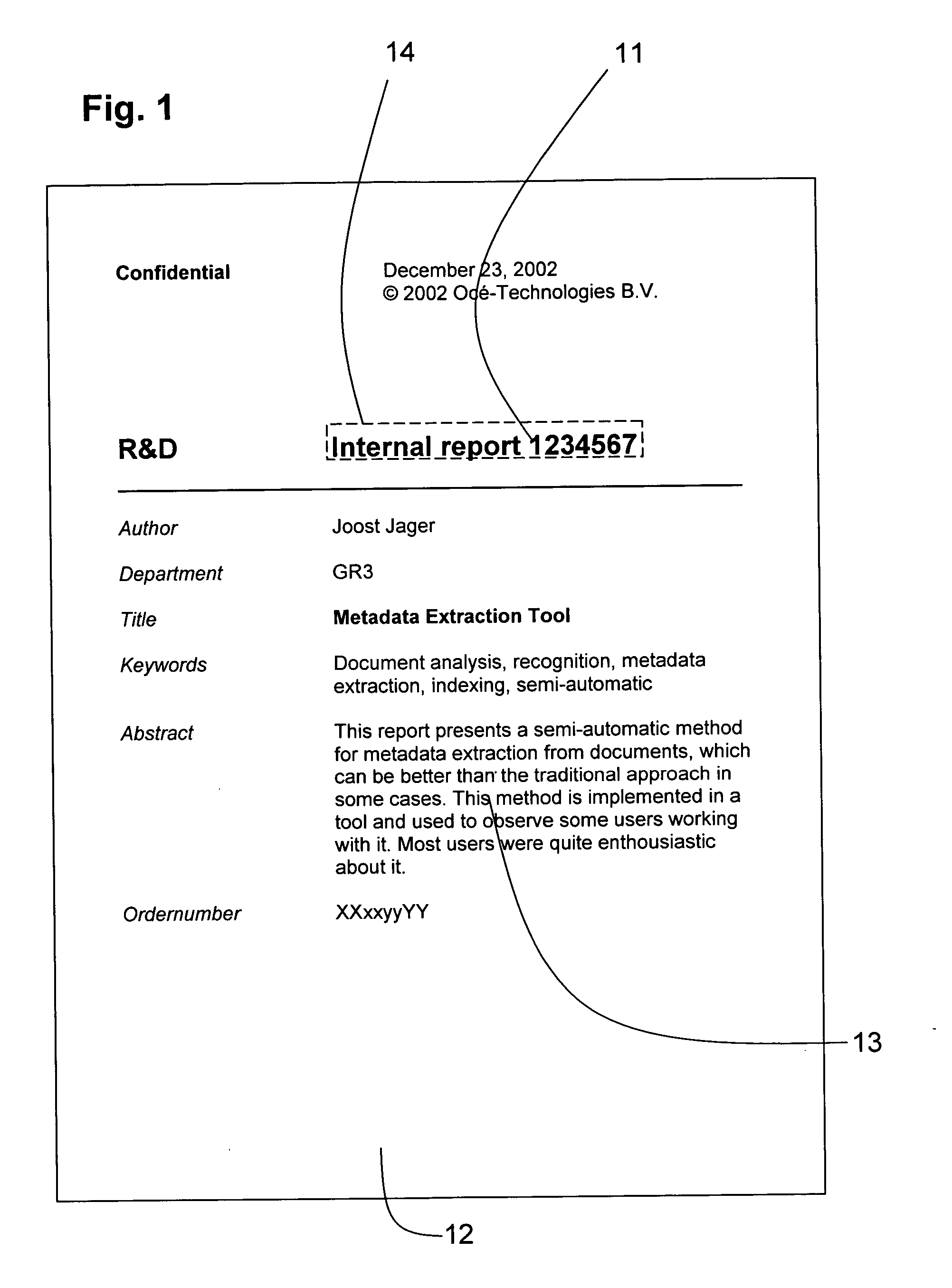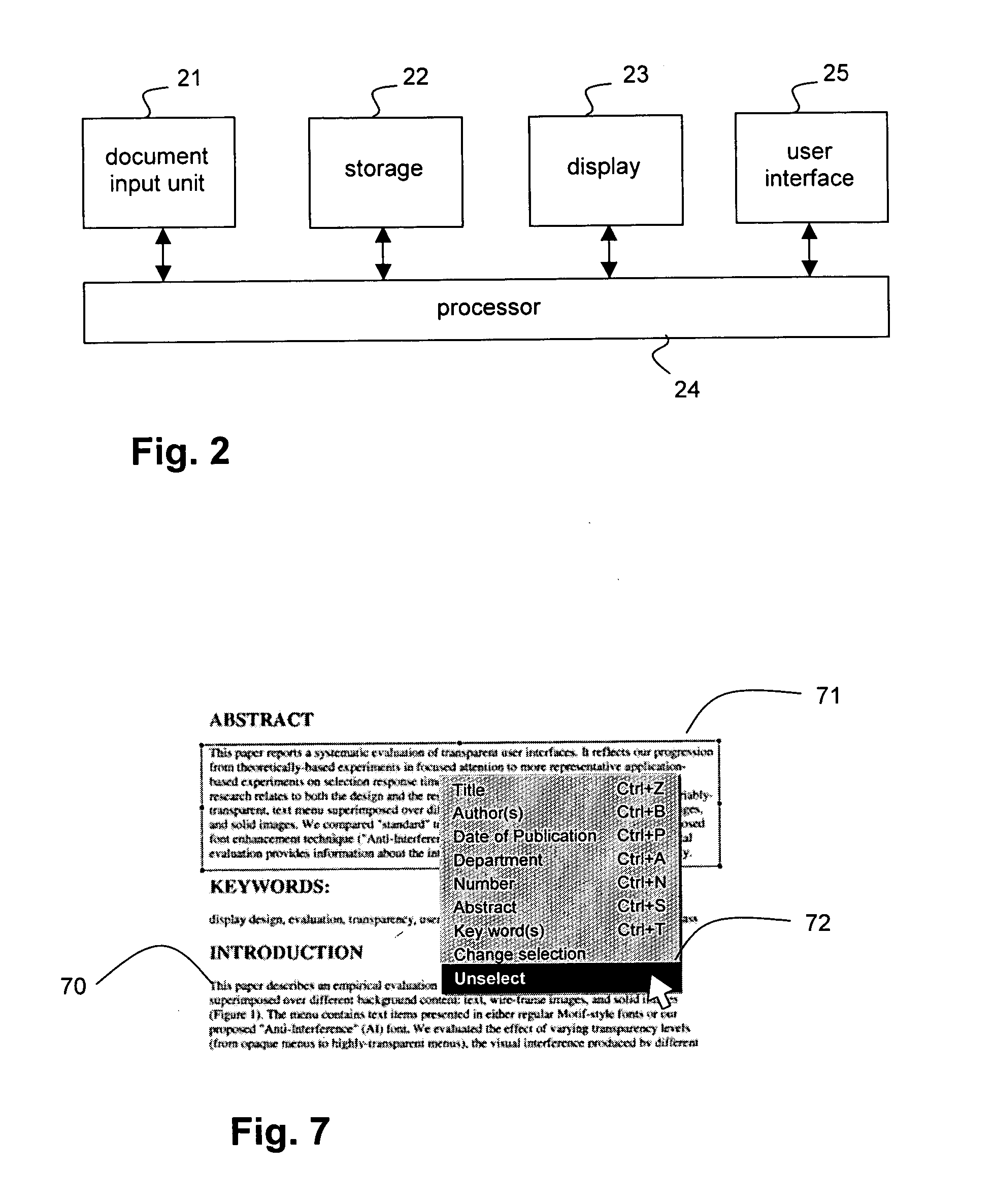Metadata extraction from designated document areas
a technology for document areas and metadata, applied in special data processing applications, instruments, electric digital data processing, etc., can solve the problems of indexing programs that take quite a long time to process documents, process that needs much computing power and yet does not always work properly, and sophisticated yet extremely time-consuming methods of generating metadata
- Summary
- Abstract
- Description
- Claims
- Application Information
AI Technical Summary
Benefits of technology
Problems solved by technology
Method used
Image
Examples
Embodiment Construction
[0043]FIG. 1 shows an example of a scanned document image and a metadata extraction area according to an embodiment of the present invention. As shown in FIG. 1, a document 13 has been scanned to generate an image of pixels. The pixels (short for picture elements) are a numerical representation of the document, and have values representing the intensity and / or color of the picture elements. A part of the image is shown on a display 12 (schematically drawn) for a user to interactively determine metadata.
[0044] An image file of a document may contain separate images for each page of the document. A title page, usually the first page, contains relevant information about the contents of the document, such as title, document type author, publication date, etc. Such information is called metadata in this description. The user may have the option to manipulate the display for showing the relevant part of the image or image file, e.g. by scrolling. Alternatively the display may show a full...
PUM
 Login to View More
Login to View More Abstract
Description
Claims
Application Information
 Login to View More
Login to View More - R&D
- Intellectual Property
- Life Sciences
- Materials
- Tech Scout
- Unparalleled Data Quality
- Higher Quality Content
- 60% Fewer Hallucinations
Browse by: Latest US Patents, China's latest patents, Technical Efficacy Thesaurus, Application Domain, Technology Topic, Popular Technical Reports.
© 2025 PatSnap. All rights reserved.Legal|Privacy policy|Modern Slavery Act Transparency Statement|Sitemap|About US| Contact US: help@patsnap.com



